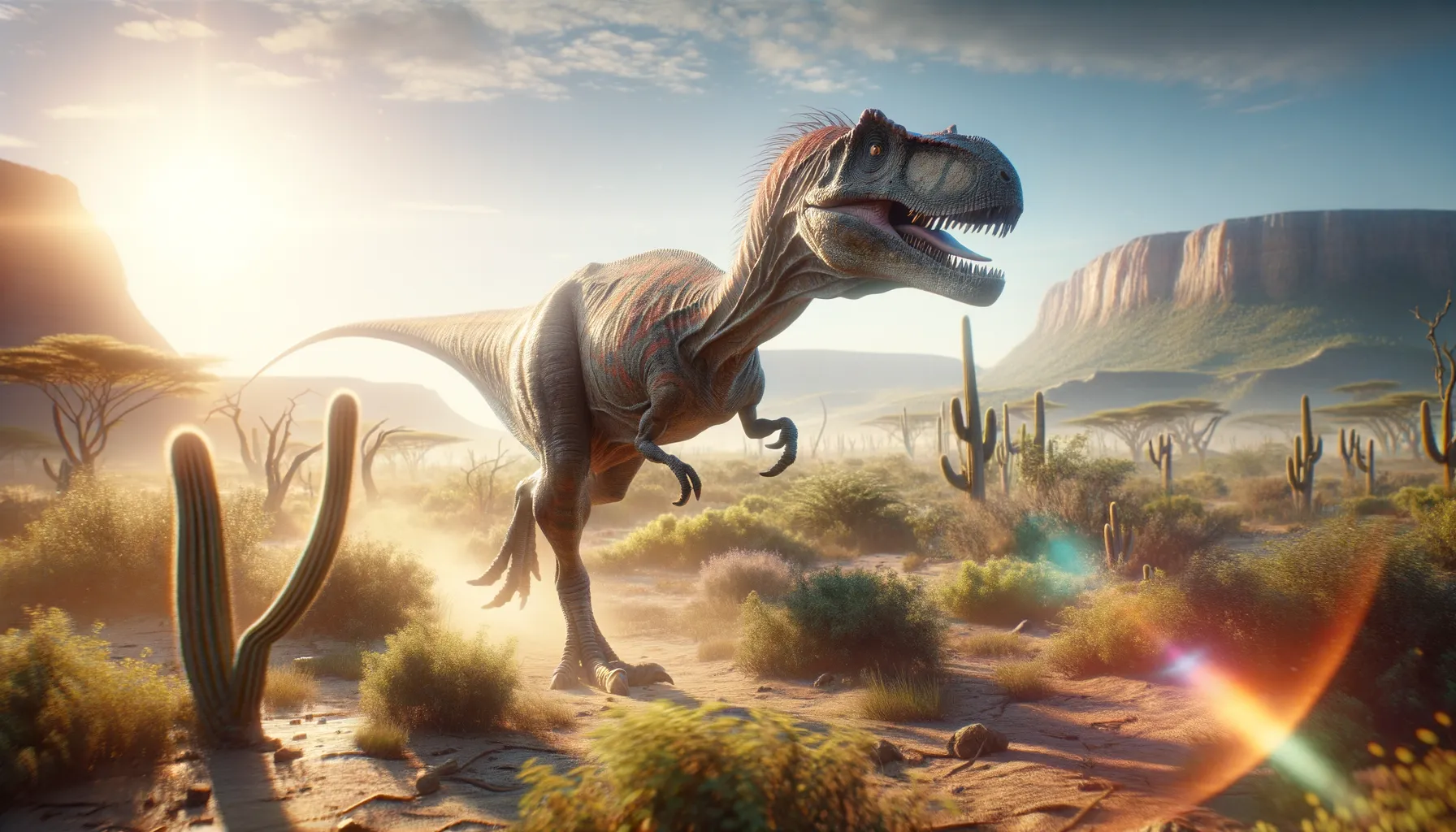
Afromimus
Swift and sleek, a Cretaceous wanderer.
Period
Cretaceous
Length
About 5 meters long.
Height
Approximately 2 meters tall.
Weight
Around 400 kilograms.
Afromimus was a nimble, theropod dinosaur that roamed ancient landscapes in what is now Africa. Its name means 'African mimic', aligning with its relation to ostrich-like dinosaurs. It is believed to have had a predominantly bipedal stance and was adapted for swift movement, possibly aiding in its survival amongst larger predators. The discovery of Afromimus has enhanced our understanding of dinosaur diversity across continents during the Cretaceous period.
Diet
Afromimus likely had an omnivorous diet, feeding on small animals, insects, and possibly plant material. Its agile nature suggests it could have scavenged for food where available.
Hunting
With its quick movement, Afromimus likely hunted small prey, using its speed to catch unsuspecting animals. It may also have relied on its agility to escape larger predators.
Environmental challenges
Living in the Cretaceous period, Afromimus faced environmental challenges such as varying climate patterns and periodic scarcity of food. Competition for resources with larger dinosaurs would have been significant, driving the development of its swift agility. Adaptation to different terrains would have been crucial for its survival.
Speed
Moderate, capable of quick bursts.
Lifespan
Estimated to be several decades.
First discovery
Discovered in Niger in 2010.
Fun Facts
- Afromimus means 'Africa mimic', a nod to its African origins and resemblance to other dinosaurs known from different continents.
- This dinosaur lived during the Early Cretaceous period, which was around 100 million years ago.
- Afromimus was discovered in the Republic of Niger, a country known for being rich in dinosaur fossils.
- It belonged to a group of dinosaurs known as theropods, which are typically characterized by hollow bones and three-toed limbs.
- Unlike many well-known theropods that were carnivorous, Afromimus is believed to have been herbivorous or omnivorous, given its anatomical features.
- The discovery of Afromimus adds to our understanding of dinosaur diversity on the African continent during the Cretaceous.
- The unique features of Afromimus help paleontologists piece together how dinosaurs might have migrated across ancient landmasses.
Growth and Development
Afromimus, like many theropods, experienced rapid growth during its juvenile stage, quickly reaching a size where it could fend for itself. It likely had growth spurts related to availability of resources. Its physical development was tailored towards maintaining its unique speed and dexterity.
Habitat
Afromimus roamed semi-arid regions with scattered vegetation. Its habitat included diverse landscapes such as river valleys and flatlands. The environment provided ample opportunity for resourceful foraging.
Interaction with other species
Afromimus would have interacted with a variety of dinosaur species, from large herbivores to fearsome carnivores. Its interactions were likely shaped by competition for resources, as well as predator-prey dynamics. It may have engaged in mutualistic relationships with other species for defense and food sourcing.
Natural lifespan
Afromimus likely had a natural lifespan of 20 to 30 years.
Reproduction
Afromimus reproduced by laying eggs, similar to other theropods. The species likely engaged in nesting behaviors to protect their young. Parental involvement may have been present, ensuring offspring survival in their early stages.
Social behaviour
Afromimus may have exhibited social behavior, possibly forming small groups or pairs. Cooperation within groups could have played a role in their survival strategies. Social interaction likely helped in navigating threats and securing resources.
Fossil locations
Fossils of Afromimus have been unearthed in Niger, providing crucial insights into its existence and habitat. The locations suggest it once thrived in a region that was part of a larger continental ecosystem in the Cretaceous. Further discoveries in similar regions could reveal more about its geographical range.
